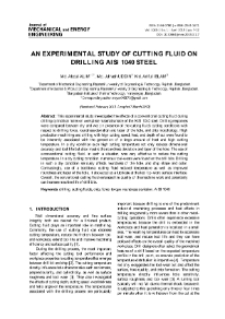Biblioteka Cyfrowa Politechniki Koszalińskiej contains 1 833 digital objects
Object
Title: An experimental study of cutting fluid on drilling AISI 1040 steel
Description:
Place of publishing:
Publisher:
Publishing House of the Koszalin University of Technology
Format:
Identifier:
oai:dlibra.tu.koszalin.pl:1517
Language:
Is part of:
Journal of Mechanical and Energy Engineering. Vol.3 (43), nr 1, s. 7-12
Rights:
Biblioteka Politechniki Koszalińskiej
Access rights:
License:
Object collections:
- Digital Library - Koszalin University of Technology > Open Access
- Digital Library - Koszalin University of Technology > Zeszyty Naukowe > Wydziału Mechanicznego > Journal of Mechanical and Energy Engineering > Vol.3 (43), nr 1
- Digital Library - Koszalin University of Technology > Zeszyty Naukowe > Rocznik Ochrona Środowiska > Vol.25
Last modified:
Nov 6, 2023
In our library since:
Jun 21, 2022
Number of object content hits:
23
All available object's versions:
https://dlibra.tu.koszalin.pl/publication/1521
Show description in RDF format:
Show description in OAI-PMH format:
| Edition name | Date |
|---|---|
| Md. Abdul Alim, 2019, An experimental study of cutting fluid on drilling AISI 1040 steel | Nov 6, 2023 |
Objects Similar
Reddy Sreenivasulu Ch. Srinivasa Rao
Stachurski, Wojciech
Mohammad Salim Kaiser
Razin, Ahmed Asif Ahammed, Dewan Salsabil Kaiser, Mohammad Salim
Stachurski, Wojciech
Pawar, Pravin Kumar, Amaresh Ballav, Raj
Szwałek, Kacper Nadolny, Krzysztof
Umamaheswarrao, Ponugoti D. Ranga Raju Suman, Koka Naga Sai Bhuvanagiri Ravi Sankar


